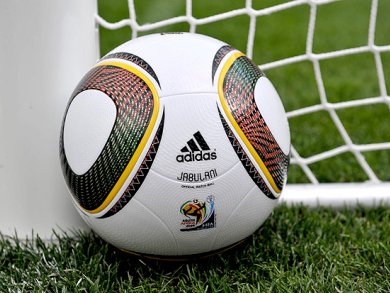The World Cup is in full swing, complete with an official new football ball named Jabulani, meaning “to celebrate” in Zulu. The players, however, aren’t exactly celebrating. Instead, many of them are complaining that the ball’s trajectory is too hard to predict.
The Jabulani is textured with small ridges and ‘aero grooves’. It is made from eight spherically molded panels thermally bonded together to create a seamless sphere. The classic black and white ball, however, is stitched together from 32 panels of pentagons and hexagons so has deep grooves.
To explain the seemingly unpredictable nature of the Jabulani, and to see if its behavior on the pitch is related to the surface texture, Beverley McKeon, Caltech, USA, put an official Jabulani through its paces in the Lucas Adaptive Wall Wind Tunnel.
Heavily textured surfaces can result in more turbulent air flow around a ball, which reduces drag at the speeds typical of a football kick and allows a ball to travel farther. When a football slows down after it’s kicked in the air, the air flow around it changes from turbulent to smooth. This transition is different for the traditional football ball than for the Jabulani, which from the point of view of a football player translates into a ball that’s behaving unpredictably.
Professor Derek Leinweber, Head of the School of Chemistry & Physics at the University of Adelaide, Australia and author of several papers on the subject, agrees, “The aerodynamic ridges on the Jabulani are likely to create enough turbulence around the ball to sustain its flight longer, and be a faster, harder ball in play. It is expected to ‘bend’ more for the players than any ball previously encountered. The Jabulani will swerve and dip, arriving with more power and energy than the previous World Cup ball, Teamgeist.”
Still, the Jabulani isn’t so unpredictable that players can’t learn to control it. “It seems like anytime the ball is changed, it takes a while for people to adapt,” McKeon says.




